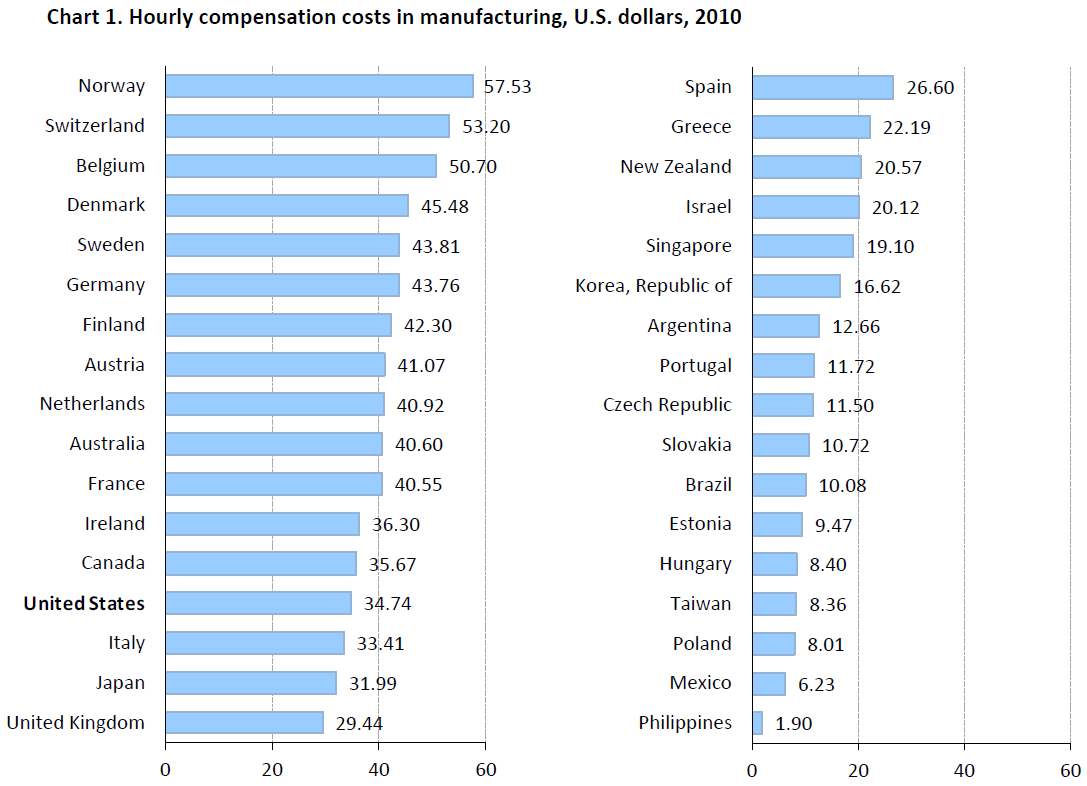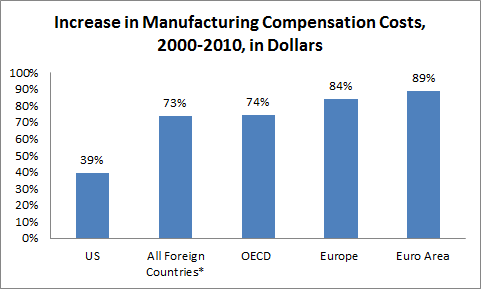
Those of us ensconced in debates in support of U.S. manufacturing often hear opponents claiming that the over-regulated U.S. labor market and unionized heavy industry render us uncompetitive in global markets.
That may sound convincing given competition from emerging markets, but there are lots of advanced economies with long records of positive net exports, while we continue to run large deficits in manufactured goods, year after year.
If you're thinking the difference must be prices, you're thinking like an economist... and you're pretty much wrong.
This new BLS report (including a link to their rockin' new dashboard -- go BLS!) provides the data in the form of manufacturing compensation costs across countries, with conversions to dollars using market exchange rates.
First, as shown in the first figure, in the most recent year for which they have complete data, we're toward the low end of the advanced economies in terms of compensation costs. Second, in dollar terms, manufacturing compensation costs have increased much faster elsewhere over the past decade (figure two; these summary measures use trade-weighted currencies, based on each countries relative share of U.S. trade; you can use the dashboard link above (open the Excel file) to view individual countries).


*OECD, Eastern Europe, East Asia
Source: BLS
Now, compensation costs aren't the whole story, especially with manufacturing becoming more capital intensive, but at least by these measures, which of course account for exchange rate movements (essential when we're discussing price competitiveness), there's not much support at all for an argument that overpaid manufacturing workers are the source of our competitive disadvantage.
I'd argue it has a lot more to do with the lack of a coherent manufacturing policy, wherein public and private representatives strategize on the best ways to boost the sector and gain global market share. Of course, this means retiring the canard that "we don't pick winners." Our competitors are well ahead of us in these endeavors and this is not the time for ideological sloganeering.
This post originally appeared at Jared Bernstein's On The Economy blog.
